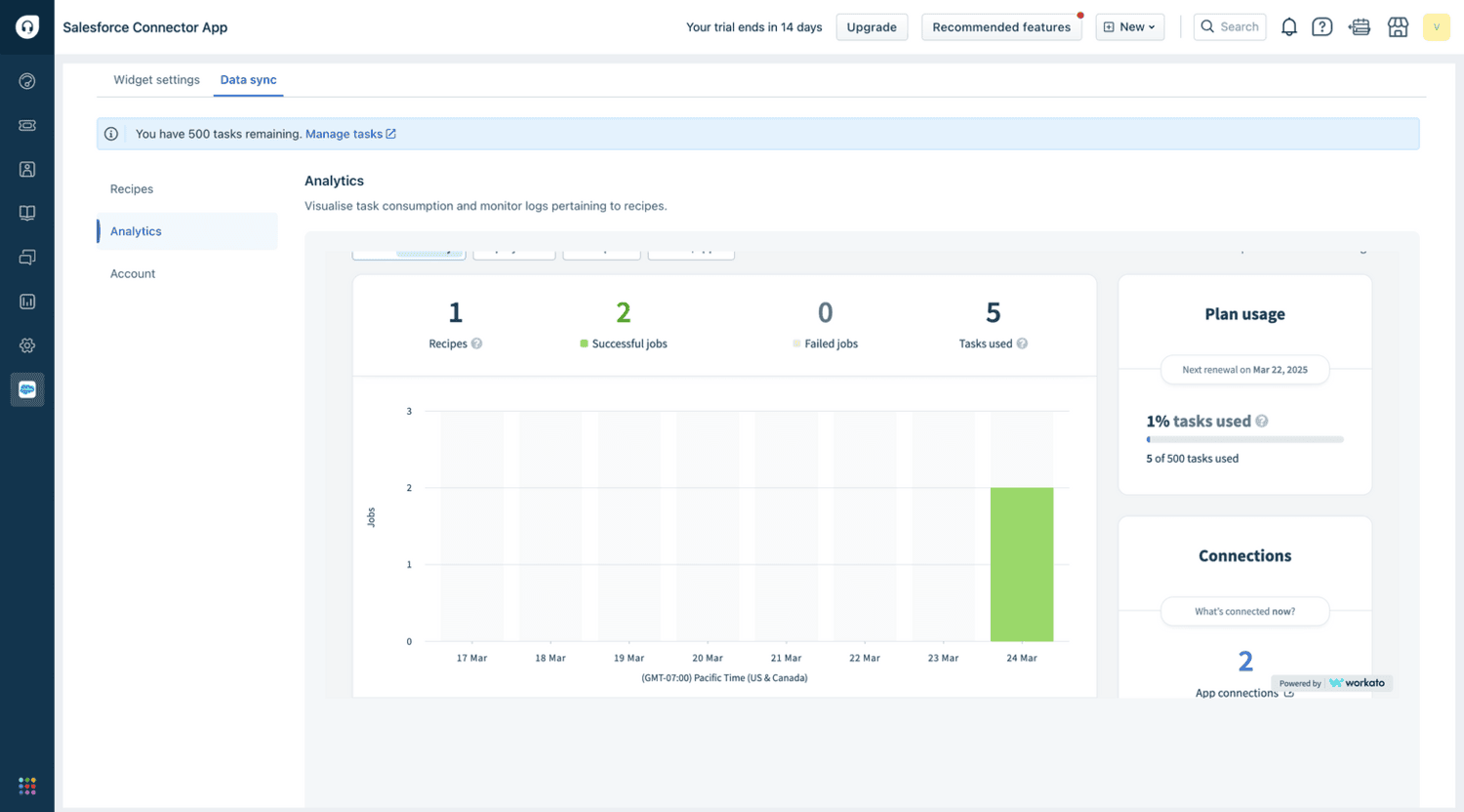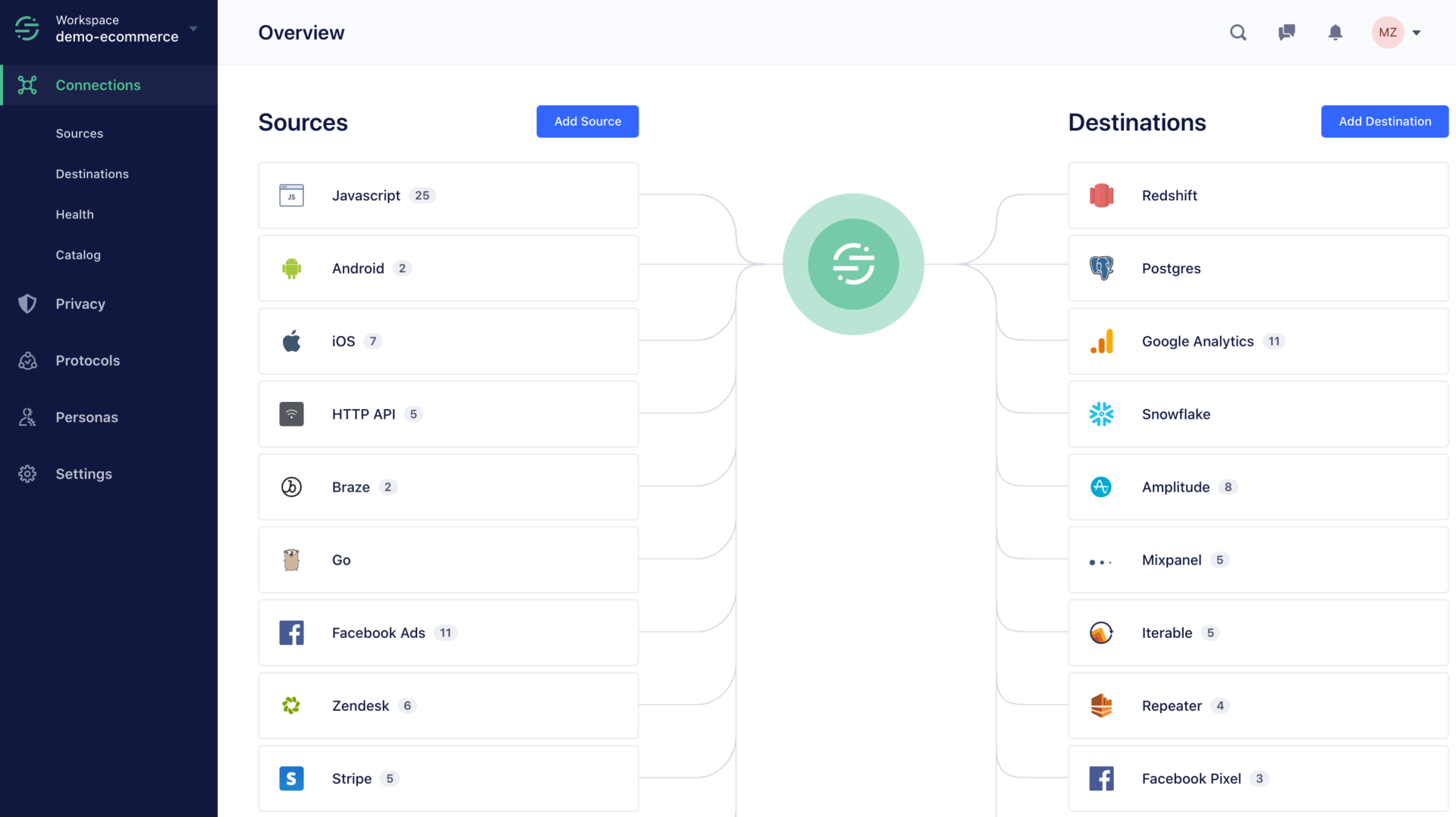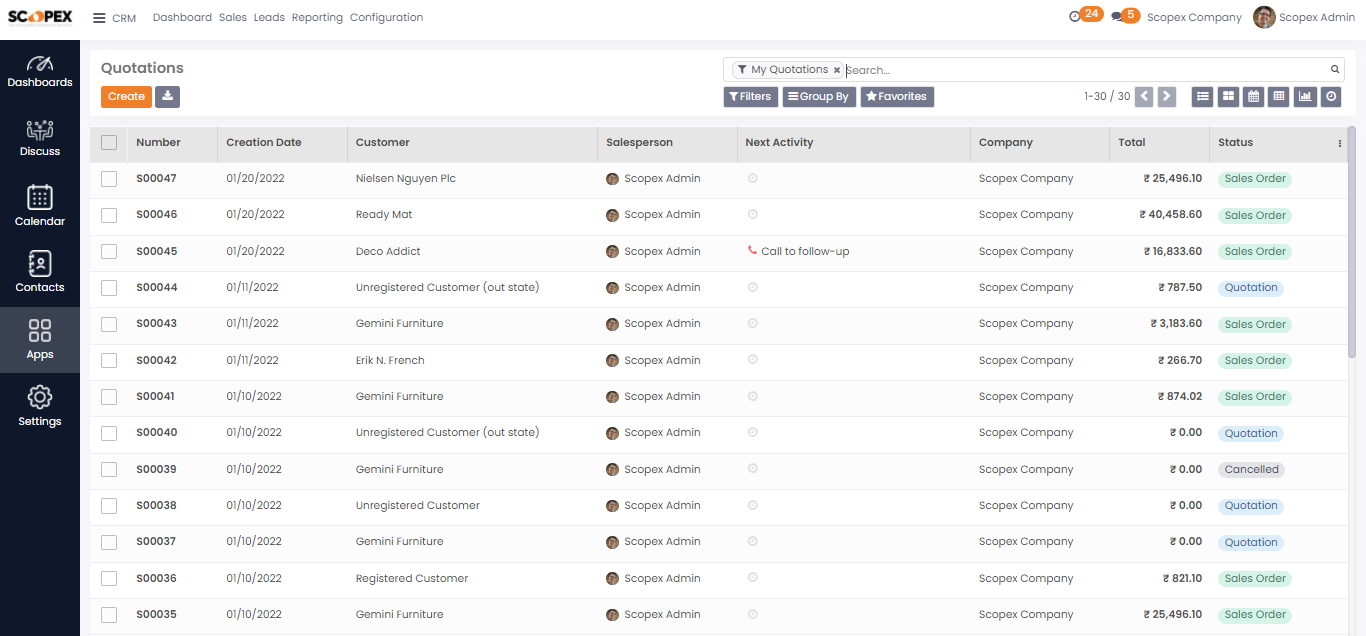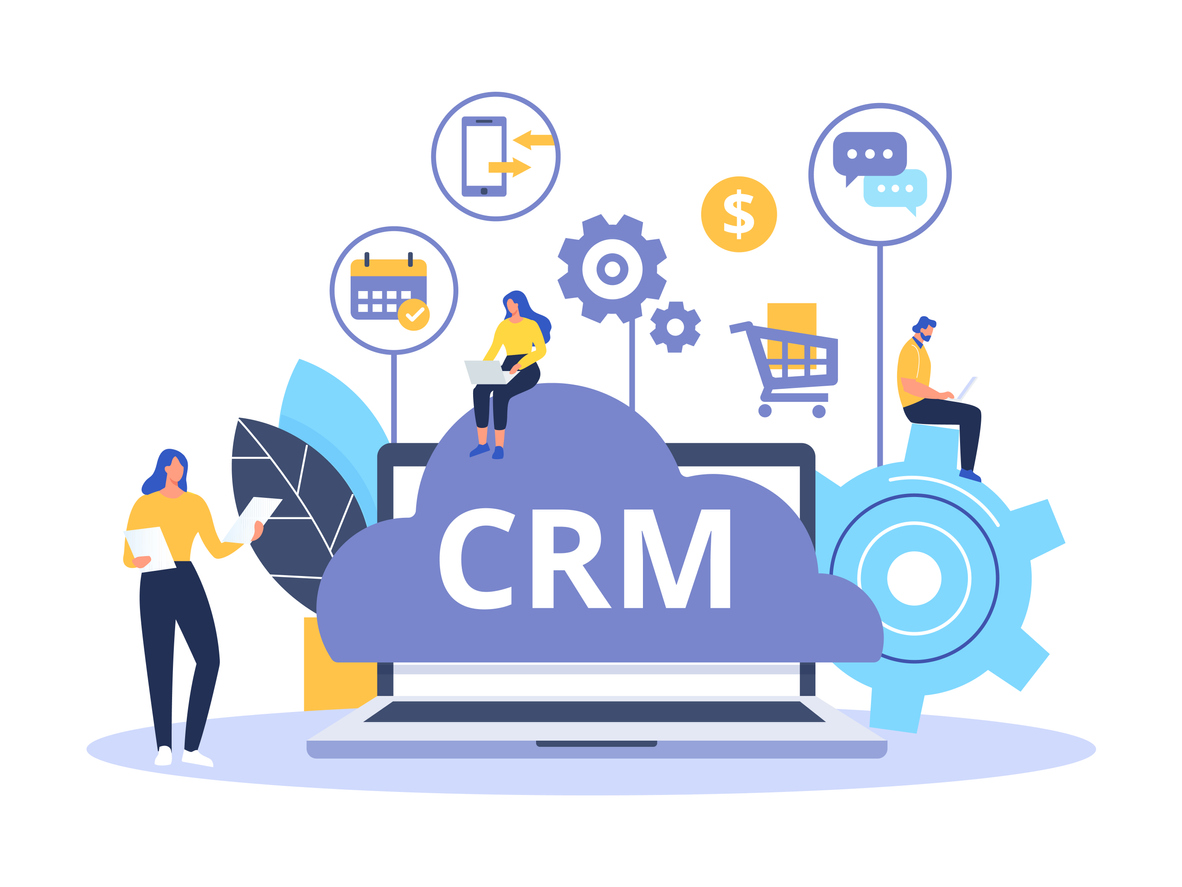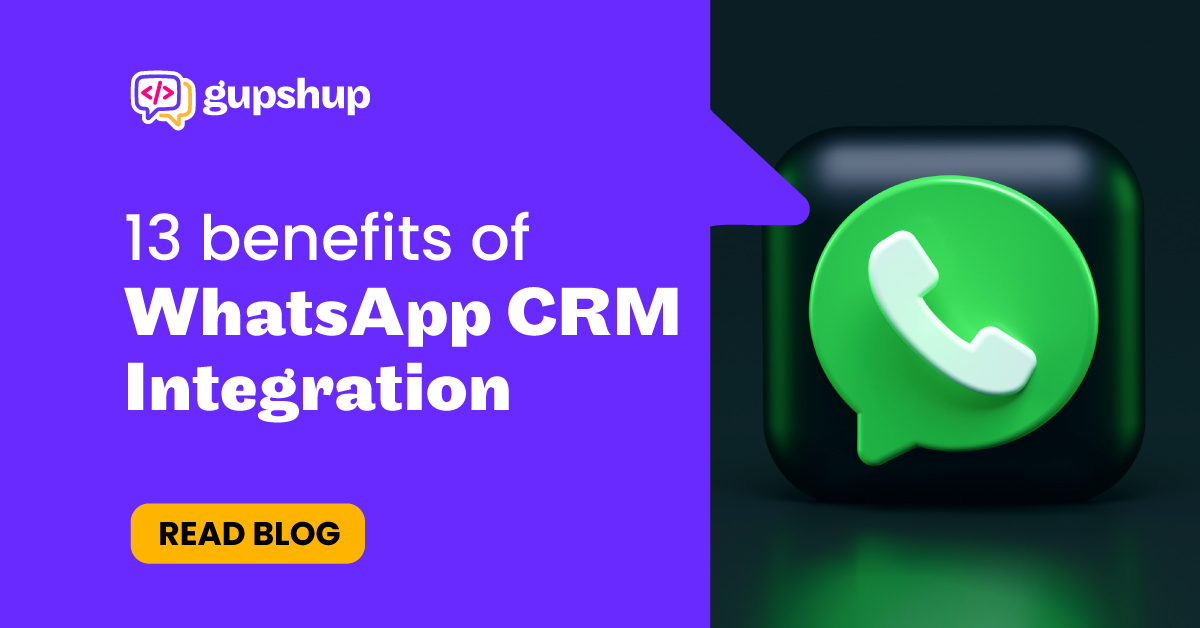Supercharge Your CRM: A Deep Dive into CRM Marketing Chatbot Integration
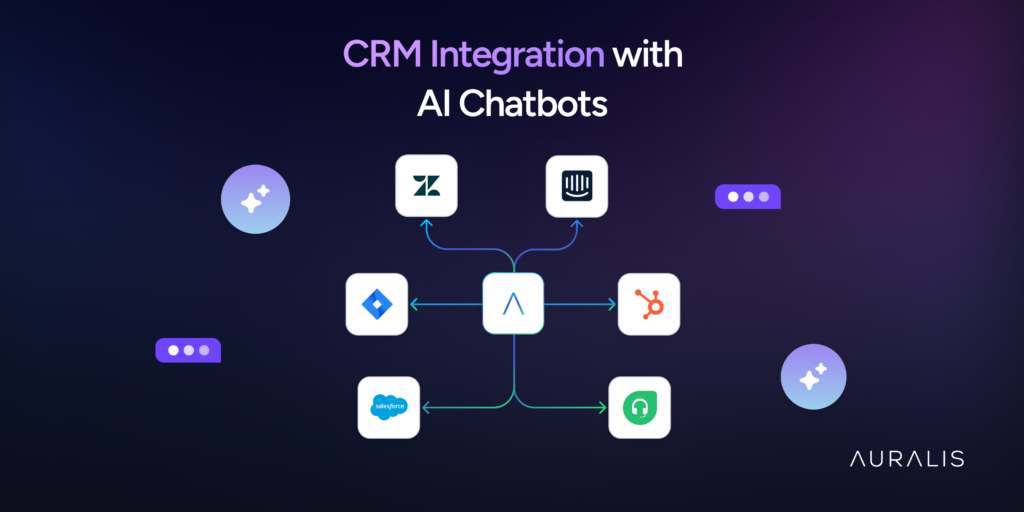
Supercharge Your CRM: A Deep Dive into CRM Marketing Chatbot Integration
In today’s fast-paced digital landscape, businesses are constantly seeking innovative ways to enhance customer engagement, streamline operations, and boost their bottom line. One of the most powerful and effective strategies gaining traction is the integration of CRM (Customer Relationship Management) systems with marketing chatbots. This synergistic combination unlocks a wealth of opportunities, allowing businesses to personalize customer interactions, automate repetitive tasks, and gain valuable insights into customer behavior. This article delves deep into the world of CRM marketing chatbot integration, exploring its benefits, implementation strategies, and future trends. We’ll unpack the “how” and “why” behind this powerful pairing, helping you understand how to leverage this technology to transform your customer relationships and drive business growth.
Understanding the Fundamentals: CRM and Chatbots
Before we dive into the integration process, let’s establish a solid understanding of the two key players: CRM systems and chatbots.
What is a CRM System?
A CRM system acts as the central nervous system for a business’s customer data. It’s a software solution designed to manage all interactions with current and potential customers. Think of it as a digital hub where you store, organize, and analyze customer information. This includes contact details, purchase history, communication logs, and any other relevant data. The primary goal of a CRM is to improve customer relationships, drive sales, and enhance customer service. Popular CRM platforms include Salesforce, HubSpot, Zoho CRM, and Microsoft Dynamics 365.
CRM systems offer a variety of functionalities, including:
- Contact Management: Storing and organizing customer contact information.
- Sales Automation: Automating tasks like lead nurturing, opportunity management, and quote generation.
- Marketing Automation: Managing email campaigns, social media interactions, and lead scoring.
- Customer Service: Tracking and resolving customer inquiries and issues.
- Reporting and Analytics: Providing insights into sales performance, customer behavior, and marketing effectiveness.
What is a Marketing Chatbot?
A marketing chatbot is a software program that simulates human conversation. It uses natural language processing (NLP) and machine learning (ML) to understand and respond to customer inquiries. Chatbots are typically deployed on websites, messaging apps (like Facebook Messenger and WhatsApp), and other communication channels. They are designed to provide instant support, answer frequently asked questions, and guide customers through various processes.
Marketing chatbots offer numerous advantages, including:
- 24/7 Availability: Providing instant support around the clock.
- Improved Customer Service: Answering common questions and resolving issues quickly.
- Lead Generation: Qualifying leads and collecting contact information.
- Increased Engagement: Interacting with customers in a conversational and personalized manner.
- Automation of Repetitive Tasks: Freeing up human agents to focus on more complex issues.
The Power of Integration: Why CRM and Chatbots are a Perfect Match
The true magic happens when you integrate your CRM system with a marketing chatbot. This integration creates a powerful synergy that enhances customer experiences, streamlines workflows, and drives business results. Here’s why this combination is so effective:
Personalized Customer Experiences
When a chatbot is integrated with a CRM, it gains access to a wealth of customer data. This allows the chatbot to personalize interactions based on individual customer preferences, purchase history, and past interactions. Imagine a customer visiting your website and the chatbot greets them by name, remembers their past purchases, and offers relevant product recommendations. This level of personalization creates a more engaging and satisfying customer experience, leading to increased customer loyalty and sales.
Enhanced Lead Generation and Qualification
Chatbots can be used to capture leads by asking qualifying questions and collecting contact information. When integrated with a CRM, this lead data can be automatically added to the CRM, allowing sales and marketing teams to follow up with qualified leads more efficiently. The chatbot can also score leads based on their responses, helping sales reps prioritize their efforts and focus on the most promising prospects. This streamlined lead generation and qualification process saves time, improves efficiency, and boosts conversion rates.
Improved Customer Service and Support
Chatbots can handle a large volume of customer inquiries, freeing up human agents to focus on more complex issues. When integrated with a CRM, chatbots can access customer data to provide personalized support and resolve issues more effectively. For example, a chatbot can retrieve a customer’s order history to answer questions about their recent purchase or track the status of a support ticket. This integration leads to faster resolution times, improved customer satisfaction, and reduced support costs.
Automated Sales and Marketing Workflows
CRM marketing chatbot integration enables businesses to automate various sales and marketing workflows. For example, a chatbot can be used to:
- Schedule appointments: Allowing customers to book appointments directly through the chatbot.
- Send automated follow-up emails: Nurturing leads and keeping customers engaged.
- Process payments: Facilitating online transactions through the chatbot.
- Provide product recommendations: Suggesting products based on customer preferences and purchase history.
These automated workflows save time, improve efficiency, and free up human agents to focus on higher-value tasks.
Data-Driven Insights and Analytics
CRM marketing chatbot integration provides valuable data-driven insights into customer behavior and preferences. By analyzing chatbot conversations and customer interactions, businesses can gain a deeper understanding of their customers’ needs, pain points, and preferences. This data can be used to improve marketing campaigns, personalize customer experiences, and optimize product offerings. CRM systems often offer robust analytics dashboards that visualize this data, making it easy to track key performance indicators (KPIs) and measure the success of your chatbot integration.
Implementing CRM Marketing Chatbot Integration: A Step-by-Step Guide
Integrating your CRM system with a marketing chatbot can seem daunting, but with a well-defined plan, it’s a manageable process. Here’s a step-by-step guide to help you get started:
1. Define Your Goals and Objectives
Before you begin, clearly define your goals and objectives for the integration. What do you hope to achieve? Are you looking to improve customer service, generate more leads, or automate sales processes? Having clear goals will guide your implementation and help you measure the success of your integration.
2. Choose the Right Chatbot and CRM Platform
Select a chatbot platform and CRM system that are compatible and meet your business needs. Consider factors such as:
- Integration capabilities: Ensure the chatbot and CRM can seamlessly integrate.
- Features and functionality: Choose platforms that offer the features you need, such as natural language processing, lead generation, and reporting.
- Scalability: Select platforms that can scale to meet your growing needs.
- Pricing: Consider the cost of the platforms and any associated fees.
Many CRM platforms, such as Salesforce and HubSpot, offer built-in chatbot integration capabilities. Alternatively, you can use a third-party chatbot platform that integrates with your CRM.
3. Plan Your Chatbot’s Conversation Flows
Design the conversation flows for your chatbot. Consider the different scenarios and interactions your customers might have. Map out the questions the chatbot will ask, the information it will collect, and the responses it will provide. Think about the customer journey and how the chatbot can guide customers through various processes, such as lead generation, customer support, and appointment scheduling.
4. Integrate Your Chatbot with Your CRM
Follow the instructions provided by your chatbot and CRM platforms to integrate them. This typically involves connecting the two platforms through APIs or using pre-built integrations. You’ll need to configure the integration to allow the chatbot to access customer data from the CRM and to send data back to the CRM. This might involve mapping fields between the two systems, such as contact information, purchase history, and support ticket details.
5. Train Your Chatbot
Train your chatbot to understand customer inquiries and respond appropriately. This involves:
- Natural Language Processing (NLP): Configure the chatbot’s NLP engine to understand a wide range of customer queries.
- Knowledge Base: Populate the chatbot’s knowledge base with relevant information, such as FAQs, product information, and support articles.
- Testing and Refinement: Test the chatbot’s responses and refine its conversation flows based on customer feedback.
6. Deploy and Monitor Your Chatbot
Deploy your chatbot on your website, messaging apps, and other communication channels. Monitor its performance closely, tracking metrics such as:
- Customer satisfaction: Measure customer satisfaction through surveys and feedback.
- Conversation completion rate: Track the percentage of conversations that are successfully completed.
- Lead generation rate: Monitor the number of leads generated by the chatbot.
- Resolution time: Measure the time it takes for the chatbot to resolve customer issues.
Use these metrics to identify areas for improvement and optimize your chatbot’s performance. Regularly review and update your chatbot’s knowledge base and conversation flows to ensure it remains relevant and effective.
7. Continuously Optimize and Improve
CRM marketing chatbot integration is an ongoing process. Continuously monitor your chatbot’s performance, gather customer feedback, and make improvements as needed. Regularly review your chatbot’s conversation flows, update its knowledge base, and refine its NLP engine to ensure it remains effective and provides a positive customer experience. As your business evolves, so should your chatbot. Stay up-to-date on the latest chatbot trends and technologies to ensure your chatbot remains competitive and relevant.
Best Practices for CRM Marketing Chatbot Integration
To maximize the benefits of your CRM marketing chatbot integration, follow these best practices:
Personalize Interactions
Leverage the customer data stored in your CRM to personalize chatbot interactions. Greet customers by name, remember their past purchases, and offer relevant product recommendations. Personalization makes customers feel valued and creates a more engaging experience.
Provide Instant and Efficient Support
Ensure your chatbot can answer common questions and resolve issues quickly. Keep your chatbot’s knowledge base up-to-date and provide clear and concise answers. Aim for fast resolution times to improve customer satisfaction.
Integrate with Multiple Channels
Deploy your chatbot on multiple channels, such as your website, messaging apps, and social media platforms. This allows customers to interact with your chatbot on their preferred channel, providing a more convenient experience.
Use Conversational Language
Design your chatbot’s conversations to be natural and conversational. Avoid robotic or overly formal language. Use humor, emojis, and other conversational elements to create a more engaging and human-like experience.
Provide Seamless Handoffs to Human Agents
If your chatbot cannot resolve a customer’s issue, provide a seamless handoff to a human agent. Make it easy for customers to connect with a live agent when needed. Ensure that the human agent has access to the customer’s conversation history and relevant CRM data to provide a smooth and efficient transition.
Monitor and Analyze Performance
Regularly monitor your chatbot’s performance and analyze its data. Track key metrics such as customer satisfaction, conversation completion rate, and lead generation rate. Use these metrics to identify areas for improvement and optimize your chatbot’s performance.
Stay Up-to-Date with the Latest Trends
The chatbot landscape is constantly evolving. Stay up-to-date with the latest chatbot trends and technologies, such as AI-powered chatbots, voice chatbots, and more. Continuously evaluate new technologies and incorporate them into your chatbot strategy to remain competitive and provide a cutting-edge customer experience.
Real-World Examples of CRM Marketing Chatbot Integration in Action
Let’s explore some real-world examples of how businesses are successfully leveraging CRM marketing chatbot integration:
E-commerce Retailer
An e-commerce retailer integrates a chatbot with its CRM to provide personalized product recommendations, answer order inquiries, and process returns. The chatbot accesses customer purchase history and preferences from the CRM to suggest relevant products. It also allows customers to track their orders, initiate returns, and contact customer service. This integration improves the customer experience, increases sales, and reduces support costs.
Healthcare Provider
A healthcare provider integrates a chatbot with its CRM to schedule appointments, answer medical questions, and provide appointment reminders. The chatbot can access patient information from the CRM to personalize interactions. It also allows patients to schedule appointments, view their medical records, and receive appointment reminders. This integration improves patient satisfaction, streamlines administrative tasks, and reduces no-show rates.
Financial Services Company
A financial services company integrates a chatbot with its CRM to provide financial advice, answer customer inquiries, and process loan applications. The chatbot can access customer financial data from the CRM to provide personalized advice. It also allows customers to ask questions about their accounts, apply for loans, and receive financial planning recommendations. This integration improves customer engagement, generates leads, and streamlines the loan application process.
The Future of CRM Marketing Chatbot Integration
The future of CRM marketing chatbot integration is bright. As AI and machine learning technologies continue to advance, we can expect to see even more sophisticated and powerful chatbots. Here are some key trends to watch:
AI-Powered Chatbots
AI-powered chatbots will become even more intelligent, capable of understanding complex customer inquiries and providing more personalized responses. They will be able to learn from customer interactions and improve their performance over time. Natural Language Processing (NLP) will become increasingly sophisticated, enabling chatbots to understand the nuances of human language and provide more natural and engaging conversations.
Voice Chatbots
Voice chatbots will become increasingly popular, allowing customers to interact with businesses using voice commands. Voice chatbots will be integrated with smart speakers, smartphones, and other devices, providing a more convenient and hands-free customer experience. The rise of voice assistants like Siri, Alexa, and Google Assistant will drive the adoption of voice chatbots.
Proactive Chatbots
Proactive chatbots will anticipate customer needs and proactively offer assistance. For example, a proactive chatbot might identify a customer who is struggling to complete a purchase and offer assistance. Proactive chatbots will be able to provide a more personalized and proactive customer experience.
Integration with Emerging Technologies
CRM marketing chatbot integration will expand to include emerging technologies, such as augmented reality (AR) and virtual reality (VR). Chatbots will be able to provide virtual product demonstrations, assist customers with AR-based shopping experiences, and offer immersive customer service. The integration of chatbots with these emerging technologies will create new and exciting customer experiences.
Focus on Data Privacy and Security
As chatbots become more sophisticated and collect more customer data, data privacy and security will become increasingly important. Businesses will need to ensure that their chatbots comply with data privacy regulations and protect customer data from unauthorized access. The focus on data privacy and security will drive the development of more secure and privacy-conscious chatbot platforms.
Conclusion: Embracing the Power of Integrated Solutions
CRM marketing chatbot integration is a powerful strategy for businesses looking to enhance customer engagement, streamline operations, and drive growth. By combining the data-driven insights of a CRM with the conversational capabilities of a chatbot, businesses can create personalized customer experiences, automate repetitive tasks, and gain valuable insights into customer behavior.
By following the implementation steps and best practices outlined in this article, businesses can successfully integrate their CRM systems with marketing chatbots and unlock the full potential of this transformative technology. The future of CRM marketing chatbot integration is bright, with AI-powered chatbots, voice chatbots, and integration with emerging technologies set to revolutionize the way businesses interact with their customers.
Embrace the power of integrated solutions and transform your customer relationships today. The time to act is now. Start your journey toward a more customer-centric and efficient business by exploring the possibilities of CRM marketing chatbot integration.

